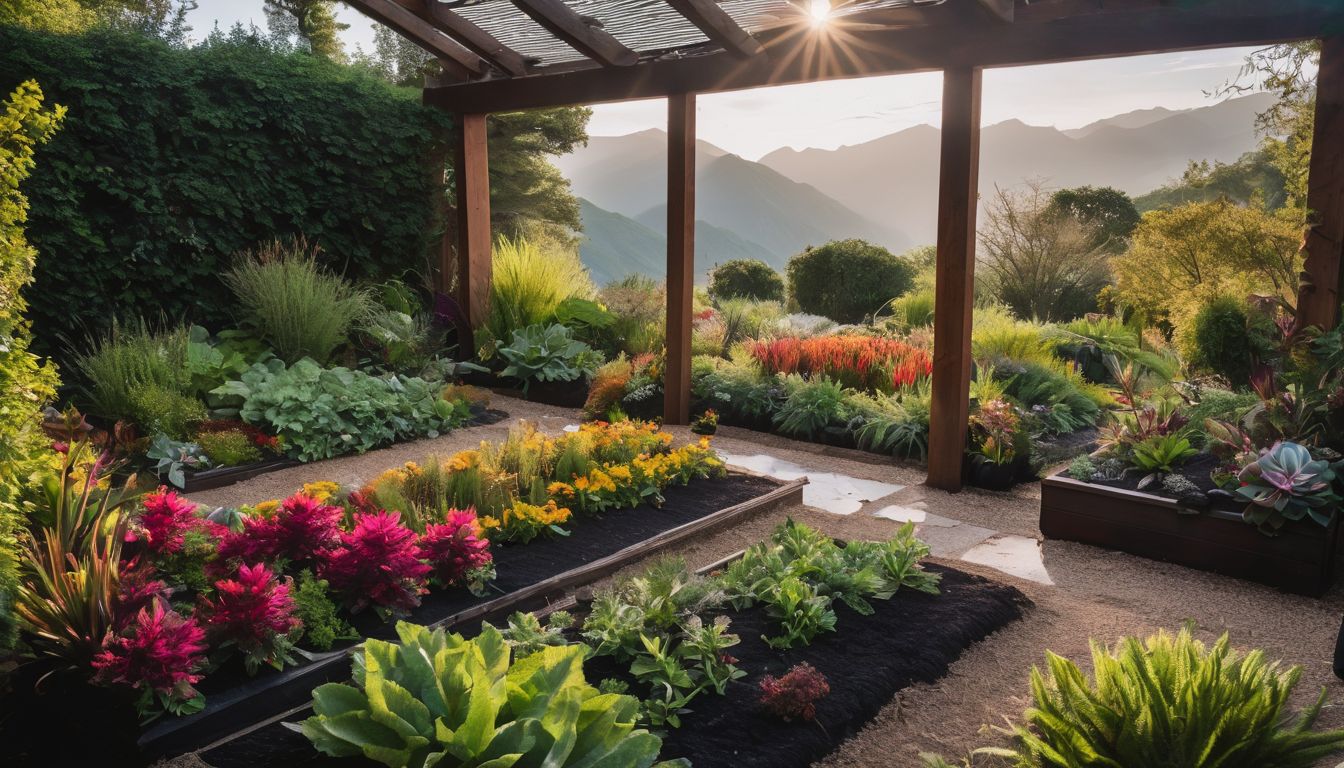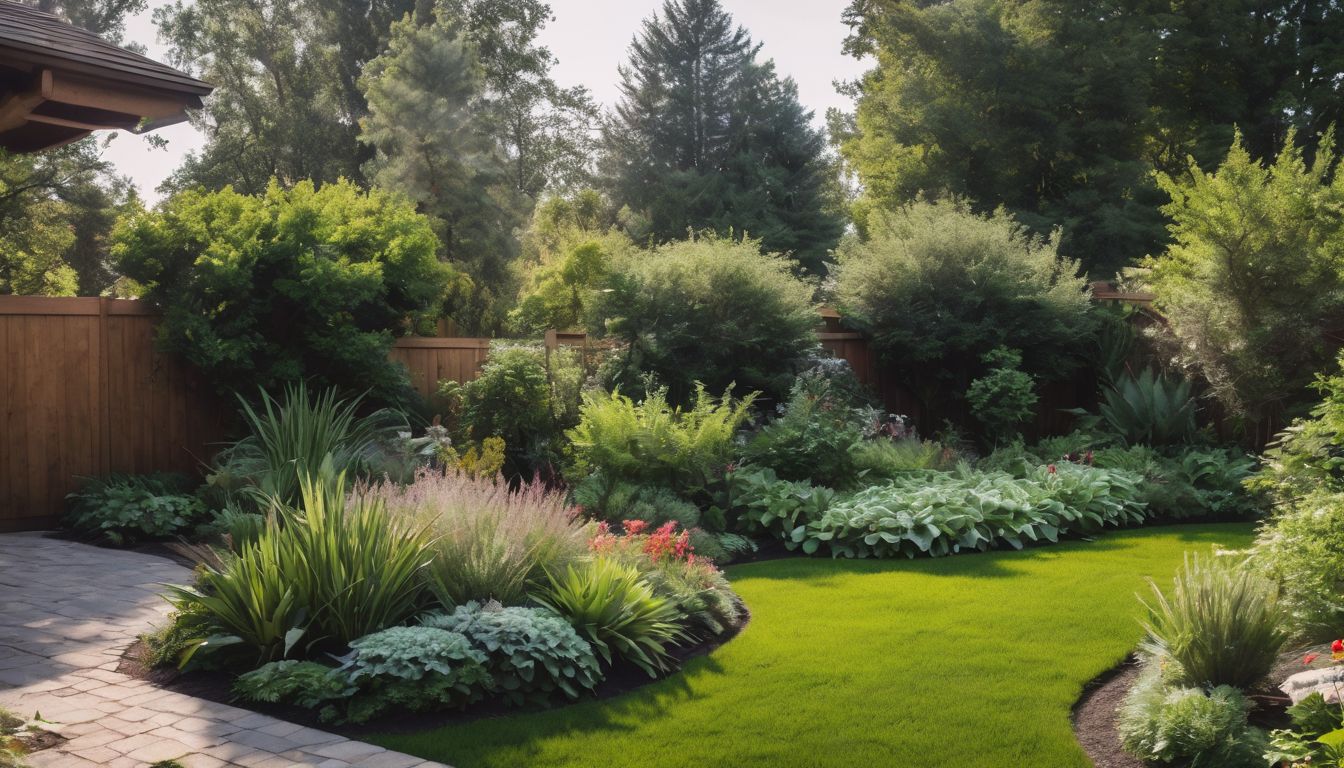Struggling to grow your own plants successfully? Raised bed gardening boasts a 20% higher yield than traditional methods. Our guide will unveil how this innovative approach can transform your garden, boosting growth and ease.
Discover the secrets within!
Key Takeaways
- Raised bed gardening can yield a 20% higher produce compared to traditional methods due to improved soil, drainage, and plant health.
- Homegrown fruits and vegetables from raised beds are fresher and tastier as they avoid the long transport times that store-bought items endure.
- By using raised beds, gardeners have better control over soil quality and watering, leading to less waste of resources and healthier plants.
- The structured design of raised beds adds aesthetic value to gardens while preventing pest problems with techniques such as crop rotation and physical barriers.
- Raised bed gardening enables an extended growing season since the soil in these structures warms up quicker than ground-level plots.
Why Grow Your Own?
Shifting from introductory concepts, consider the personal impact of cultivating your own crops. Growing your own produce connects you directly with the environment, offering a deeper understanding and appreciation for nature’s cycles.
Cultivating plants at home allows you to witness the journey from seed to plate, fostering a unique relationship with your food.
Homegrown fruits and vegetables often taste better than store-bought alternatives because they’re fresher and haven’t lost flavour during lengthy transportation. You also gain control over what goes into your garden; that means no unwelcome chemicals or pesticides.
This aligns perfectly with conservation efforts as it reduces reliance on industrial agriculture, which is often associated with harmful environmental practices. Plus, tending to a garden encourages outdoor activity and can lead to improved physical well-being alongside mental relaxation and satisfaction.
The Advantages of Raised Bed Gardening
Raised bed gardening offers numerous benefits, including aesthetic appeal, superior soil quality, healthier harvests, prolific produce, control over water usage, protection against pests and diseases, and an extended growing season.
These advantages make raised bed gardening a popular choice for environmentally conscious individuals looking to support conservation efforts.
Aesthetic appeal
Raised bed gardening not only offers practical benefits but also enhances the visual appeal of your garden. The raised beds add dimension and structure while creating an organised, neat appearance that adds a touch of charm to any outdoor space.
By elevating your plants, you can create a well-defined and tidy look that blends beautifully with the rest of your landscaping.
The structured design allows for easier access and maintenance, ensuring a more aesthetically pleasing garden without compromising functionality. Additionally, raised beds provide an opportunity to get creative with different materials and designs, allowing you to tailor the aesthetic to your personal style while reaping the numerous benefits of this gardening method.
Superior soil
With raised bed gardening, you have the advantage of controlling the quality of your soil. You can tailor the soil to suit the specific needs of your plants without much hassle, resulting in healthier and more productive growth.
Plus, with raised beds, you’ll have better drainage and aeration than traditional garden plots. The loose and friable soil in a raised bed allows roots to penetrate easily, leading to improved water retention and reduced risk of waterlogging.
This ensures that your plants receive optimal nutrition while preventing diseases caused by waterlogged conditions.
Healthier harvests
Raised bed gardening promotes healthier harvests by providing optimal growing conditions for plants. The improved soil structure and drainage in raised beds allow for better root development, leading to stronger and more resilient plants.
Additionally, the elevated nature of raised beds helps to reduce soil compaction, ensuring that plant roots have easier access to nutrients, resulting in healthier and more abundant yields.
Furthermore, the controlled environment of a raised bed enables gardeners to avoid overcrowding plants, reducing competition for resources and promoting better air circulation. This aids in preventing common issues such as fungal diseases and pests infestations.
Overall, the practice of raised bed gardening offers a sustainable approach that supports environmental conservation while yielding nutritious produce.
Prolific produce
Discover the amazing potential of raised bed gardening for growing bountiful yields. Raised beds encourage prolific produce by offering ideal soil conditions, excellent drainage, and easy access to sunlight for your plants.
You can grow a variety of fruits, vegetables, herbs and flowers in these nutrient-rich beds with ease.
Elevated from ground level, raised beds provide optimal growing conditions which lead to healthier plants and an abundant harvest. This method allows you to maximise space without compromising on the quality or quantity of your produce.
Control over water
Control over water is a key advantage of raised bed gardening. With this method, you have the ability to precisely manage the amount of water your plants receive. This means you can avoid wastage and ensure that your plants get exactly what they need, promoting healthy growth and minimising water usage.
Raised beds also allow for efficient use of water by preventing runoff and evaporation. By controlling irrigation directly within the confined space of the raised bed, you can significantly reduce water loss, making it an eco-friendly choice for those who are conscious about conserving resources while maintaining a lush garden.
Protection against pests
Minimise pest problems in raised bed gardening by using physical barriers like row covers or netting, which deter insects from reaching plants. Handpick and remove pests, such as caterpillars or beetles, to prevent infestations.
Introduce beneficial insects like ladybirds or lacewings that feed on harmful pests and keep their populations in check.
Rotate crops yearly to disrupt the life cycle of pests; this reduces their ability to establish themselves and multiply. Additionally, practise good garden hygiene by clearing debris and fallen fruit regularly, eliminating hiding spots for pests.
Extended growing season
Raised bed gardening offers the perk of an extended growing season. The soil in raised beds warms up faster in spring, allowing for earlier planting and longer growing periods. This means more time to grow your favourite fruits, vegetables, and flowers, making the most of your garden space.
Additionally, the improved drainage and aeration provided by raised beds can protect plants from waterlogging during rainy spells, further extending their productive lifespan.
Moreover, with proper insulation methods such as row covers or cloches, you can safeguard your plants against early frosts in autumn—giving you an even longer harvest window. These benefits translate into greater yields throughout the year while supporting environmentally conscious practices.
Types of Raised Beds
There are various types of raised beds to consider, including traditional wooden frames, concrete blocks, and even recycled materials such as old tyres or pallets. Each type has its own benefits; for example, wooden frames add a natural aesthetic appeal to your garden while concrete blocks provide excellent durability.
Recycled materials not only reduce waste but also serve as a sustainable choice for environmentally conscious individuals.
Additionally, you can explore alternative methods such as hugelkultur or lasagna gardening that involve creating raised beds using organic materials like logs and compost layers. These methods promote sustainability by recycling organic matter and improving soil health over time.
Considerations Before Starting Raised Bed Gardening
Before starting raised bed gardening, it’s important to start small and select a suitable site for your beds. Consider site preparation, choosing the right soil, and planning how you will plant in your raised bed.
Start small
Small is a great place to start when creating a raised bed garden. It’s easier to manage, requires less time and effort to set up, and provides an excellent introduction to the world of gardening.
Beginning with a small raised bed allows you to gain experience while minimising the risk of overwhelming yourself. Starting small also means that you can quickly see the benefits of raised bed gardening without committing too much space or resources at once; this approach is ideal for those who are new to gardening or have limited outdoor areas.
Once you’ve mastered one small raised bed, you can always expand your garden later on if desired. This gives you the freedom and flexibility to grow your garden at your own pace, adding more raised beds as your confidence and skills grow.
Selecting a suitable site
Before choosing a suitable site for your raised bed, assess the available space and sunlight exposure. Select an area with at least 6-8 hours of direct sunlight per day. Avoid low-lying spots that may lead to waterlogging, as well as areas with strong winds that could dry out the soil quickly.
Opt for a level surface to ensure water distribution is even, and consider proximity to a water source to make irrigation more manageable.
When selecting a site for your raised bed, prioritise accessibility and convenience to streamline planting, maintenance, and harvesting activities. Additionally, avoid placing the bed too close to large trees or shrubs that could compete with your plants for nutrients and moisture.
Site preparation
When preparing your site for raised bed gardening, start by selecting a sunny location. Clear the area of any debris and ensure it has good drainage. Loosen the soil and remove any weeds or grass.
It’s important to level the ground where your raised beds will be placed to avoid uneven settling.
Adding compost or organic matter before constructing your raised beds can improve soil structure and fertility, providing an optimal environment for plant growth. Consider installing a barrier at the bottom of the bed to deter invasive plants roots from infiltrating your garden.
Choosing the right soil
When selecting soil for your raised bed, opt for a high-quality mix that provides excellent drainage and fertility. Look for a blend containing compost, peat moss, and vermiculite or perlite to ensure adequate moisture retention while preventing waterlogging.
It’s vital to choose organic soil free from harmful chemicals and synthetic fertilisers to support the health of your plants and the environment. Consider sourcing soil locally to reduce carbon emissions associated with transportation.
While purchasing soil may seem easier, making your own mixture can be rewarding. Blending equal parts garden soil, compost, and coarse sand will create a nutrient-rich medium perfect for growing your favourite fruits and vegetables in raised beds.
Planting in your raised bed
When planting in your raised bed, consider the spacing between plants to allow for proper growth and airflow. Choose crops that are suitable for the size and depth of your raised bed, ensuring they have enough space to thrive.
Rotate your crops each season to maintain soil health and minimise disease.
Once you’ve selected your plants, dig small holes or furrows at appropriate intervals for planting. Gently place the seedlings or seeds into the prepared spaces and cover with soil.
Conclusion
Embrace the advantages of raised bed gardening, such as superior soil and healthier harvests. Boost your garden’s aesthetic appeal with a raised bed while enjoying prolific produce all season long.
Take control over water usage, protect against pests, and extend your growing season effortlessly. Start small, select a suitable site, prepare it well, choose the right soil and get planting to reap these benefits in no time!
FAQs
1. Why should I garden in raised beds?
Raised bed gardening can help you avoid soil compaction, improve drainage, and reduce weed growth.
2. Can I grow more plants in a raised bed compared to traditional gardening?
Yes, raised beds allow for closer planting which can lead to growing more plants in a smaller area.
3. Will my plants be healthier if I use a raised bed?
Plants often grow healthier in raised beds because of the improved soil quality and reduced risk of pest invasion.
4. Is it easier to maintain a garden with raised beds?
Raised beds make it easier to manage your garden as they are at a more convenient height for planting and weeding.
5. Can I build a raised bed on any type of surface?
Yes, you can set up raised beds on almost any surface including grass, concrete or soil.





